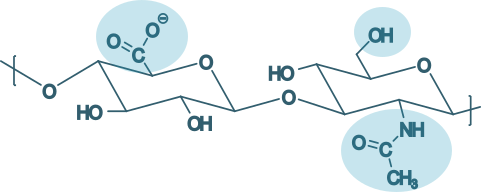Biomaterials Development to Advance Nanomedicine
Our diverse projects are unified by a single aim:
To develop new polymeric hydrogel-based platforms that can be used to improve therapeutic outcomes for ocular diseases
Ionically-crosslinked hyaluronic acid hydrogels
Hyaluronic acid is naturally present within our bodies that is important for normal biological function. While hyaluronic acid is typically crosslinked by modifying the polymer, we instead leveraged the innately present ion-interacting groups to develop a new class of ionically crosslinked hydrogels using a wide variety of bivalent metal cations. These materials, especially the Mg(II)-HA could eventually be optimized towards arthritis treatment and dermal, ocular or drug delivery applications.
We are currently working towards formulating our Mg(II)-HA hydrogels towards ocular applications.
Check out our recent paper published in Biomacromolecules:
Prakash et al., “Ion-Mediated Cross-Linking of Hyaluronic Acid into Hydrogels without Chemical Modification.”
Hydrogels for controlled delivery of hydrophobic ocular drugs
<Under construction coming soon!>
Protein-Polymer-Drug Interactions
Discovering DISCO NMR
Direct Saturation Compensated (DISCO) NMR, developed by Frank Gu Lab alumni Dr. Jeffery Watchorn is a novel NMR technique useful for detecting and measuring atomic-level interactions between various polymers and large biomolecules, such as proteins.
Understanding how polymers interact with the wide range of biomolecules within the body can help researchers improve the delivery of drugs.
Machine Learning
Incorporation to of machine learning (ML) to assist research into material science and polymer-drug-protein interacting complexes. For more information about utilizing machine learning and automation in biomaterial research, click here.





